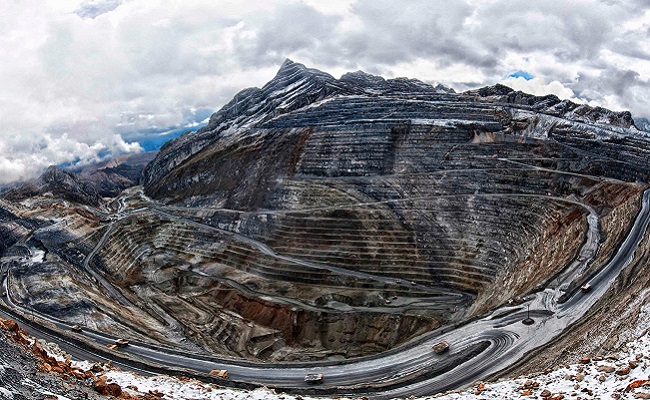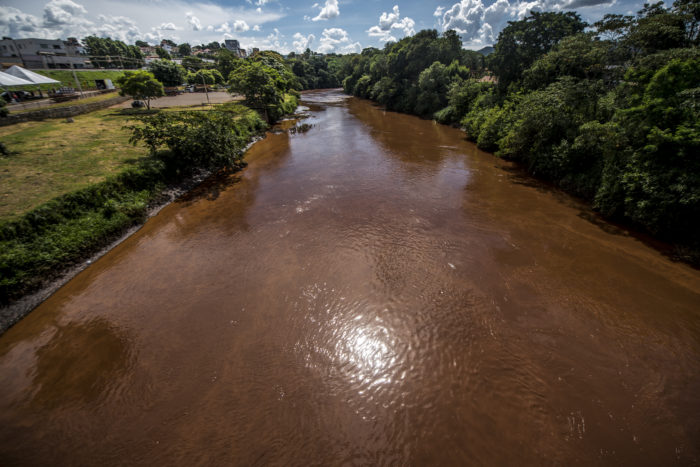Today, LAB is proud to launch a crowdfunding campaign for a brand new and very important LAB project: The Heart of Our Earth: Community Resistance to Mining in Latin America.
Why mining? And why now?
Mining has expanded massively in Latin America in recent decades. Vast landscapes have been stripped to feed the factories of Europe, North America and Asia – and not only in traditional mining regions, but also in hitherto pristine areas in places like Argentine Patagonia, the Amazon Rainforest and the Guatemalan Highlands.
But as mining has expanded, so has community opposition. All over Latin America, people have mobilised to defend their land, water and traditional ways of life – despite enormous inequalities in power and resources and in some cases the considerable dangers. In these stories, we believe there are lessons for social movements and environmental activists everywhere.
Can you give some examples?
Argentina: In the province of Chubut, Argentina, tensions have been rising in recent months as the government steps up its attempts to relax the provincial mining law. Open-pit mining has been banned in Chubut since 2003, when well-organised community resistance in the town of Esquel blocked the opening of a goldmine by the American company Meridian Gold. But mining industry representatives have remained in the region ever since and continue to lobby lawmakers to overturn the ban.

Now, with the Covid-19 pandemic making organised resistance difficult, the government is considering a “zoning” proposal which, while maintaining the ban in the mountains, would allow mining in the central plateau region, home to Mapuche indigenous communities. This brought protestors to the streets, resulting in police raids and arrests following damage to government buildings. Locals in Chubut want the 2003 law strengthened, fearing that once the companies get a foothold, mining expansion will be inevitable.
Peru: And in the mountains of Peru, frustrations hit boiling point earlier this year over emergency assistance for the local population during the pandemic. Although Peru is amongst the countries worst hit by Covid-19 – in spite of some of Latin America’s toughest restrictions – mines have continued to operate, with mining being designated an “essential” activity by the government.

In the province of Espinar, where just 34% of the population have accessed some kind of government assistance, communities requested that part of funding usually earmarked for local development initiatives by the Antapaccay mine (owned by the Anglo-Swiss giant Glencore) be used for emergency support instead. Antapaccay refused.
This resulted in violent protests, with five people, including two minors, treated for bullet wounds following confrontations with the police. Protestors cited not only the lack of support during the pandemic, but also ongoing heavy metal contamination in the area and failure to consult communities adequately over the planned expansion of the mine.
What’s the problem with mining?
Simply put, mining is one of the dirtiest and most destructive industries known to man. It consumes vast amounts of water – sometimes thousands of litres a second – which is usually pumped from underground or from other local water sources, jeopardising access for the people living nearby. Once used, much of this water is contaminated, becoming unfit for human consumption or for use in agriculture.
Brazil: With advanced technology permitting extraction and processing of lower grade ore than in the past, mining today often transforms entire landscapes, generating enormous quantities of waste or ‘tailings’ as it is called. This has to be collected and stored securely to prevent devastation to the surrounding environment, though with regulation and inspection lax throughout much of Latin America, companies often get away with cutting corners, with potentially disastrous consequences, as in the cases of Mariana and Brumadinho in Brazil.

Any benefits to local communities tend to be vastly outweighed by these environmental impacts. Mining requires great investment in terms of capital but relatively little labour, meaning that commonly very few locals are employed in the sector. The profits tend to be channelled out of the region where extraction occurs, towards local elites and international investors.
It is therefore inevitable that local communities mobilise against mining projects. But all too often this is met by companies and governments with criminalization and human rights abuses, including harassment, threats and even murder.
As the principal barrier to further expansion of the mining frontier, it is essential that we support the communities on the front line.
And what about climate change? Don’t we need metals for the energy transition?
We do. The transition away from fossil fuels will require more widespread use of technology such as batteries, solar panels and wind turbines – all of which depend on metals such as copper, lithium and cobalt.
But studies have suggested that globally mining is responsible for more than a quarter of all CO2 emissions. Moreover, the continued expansion of mining and other large infrastructure projects into forests risks pushing us past a tipping point, making climate targets impossible to achieve. In other words, mining in its current form is a big part of the problem.
A just and sustainable energy transition cannot be based simply on trading fossil fuel extraction for mineral extraction, nor on the ongoing devastation of communities and ecosystems in Latin America and elsewhere in the Global South.
So what will LAB’s project consist of?
It will consist of a book, written in lively prose accessible to non-specialists, documenting the expansion of the mining industry in Latin America in recent decades, its impacts on communities and ecosystems, and the ways in which people have been mobilising in defence of their land, water and traditional ways of life. It will include first-person testimony from those involved, alongside original research.
We will also build a website, similar to that we put together for Voices of Latin America. It will be a space for further reading, multimedia material and comment, allowing the project to continue long after the original book has been published. We will encourage people from affected communities to contribute and we hope it will become a constantly evolving archive, in which the activities of the mining industry are scrutinised and any abuses denounced.
Finally, LAB is working with partners on this project including London Mining Network, Christian Aid, War on Want and Mines and Communities, with whom we will produce materials aimed at policymakers, investors, companies and the general public, e.g. to raise awareness of the contribution of the mining industry to climate change ahead of the COP26 summit next year.
What can I do to help?
- Please share the info with friends, family, colleagues, followers and anyone else you think might be interested.
- Please like/follow the dedicated Facebook campaign page, where we will be adding all campaign updates. We also have an Instagram page.
- Please make a donation if you’re able to!
- For more information, a press pack, or if you would like to help with the project, as a volunteer researcher, translator or campaigner, do write to us at: mining@lab.org.uk
Main image: Brazil’s Norsk Hydro ASA Paragominas open pit mine. Such industrial processes are highly destructive of Brazil’s forests, indigenous reserves and cultures. Photo credit: Norsk Hydro ASA via VisualHunt / CC BY-NC-SA.

